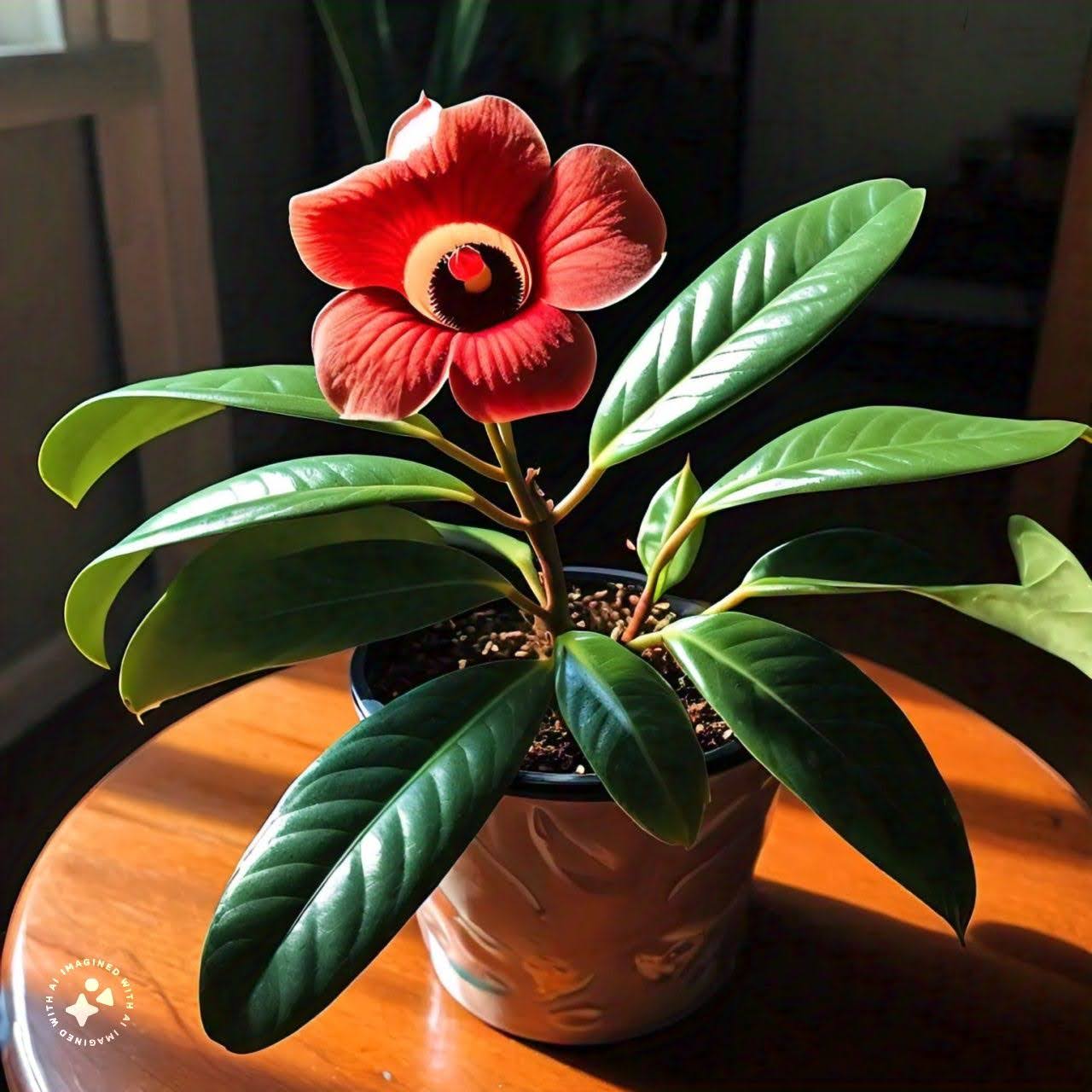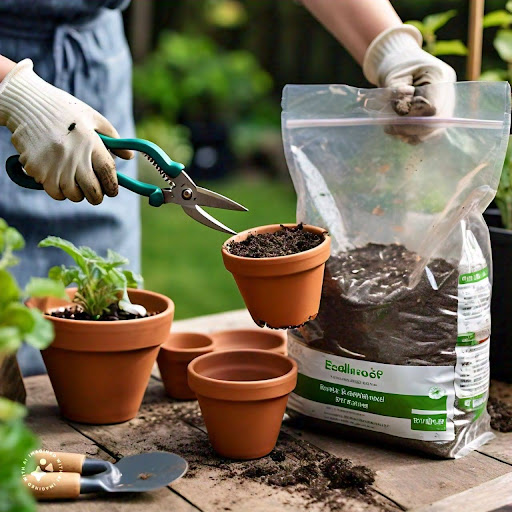Who needs a makeup bag when you can grow your own lipstick? Just kidding! Its a decorative plant whose flowers resemble lipsticks
Do you love tabular flowers with mesmerising beauty and attractive color patterns? If so, let me draw your attention to fantastic lipstick plant. A blast of vibrant colors and lush green foliage.
And guess what? The plant is very easy to care for and beginner friendly. Continue reading to explore everything about these cute plants!

Introducing the Lipstick Plant: A Vibrant Houseplant Choice
Lipstick plant also know as lipstick vine is a beautify houseplant. It can enhance the look of your garden as well as bedrooms and bathrooms.
It gets its name as flower buds peek out looking like miniature tubes of lipsticks. Below are some details about its birthplace, botanical names and identifiers.
Origin:
The plant originated in Southeast Asia. but exact birthplace is humid tropics of the Malay Peninsula.
Botanical Name and History:
The lipstick plant belongs to the genus Aeschynanthus (pronounced ee-SKEE-NAN-thus) within the botanical family Gesneriaceae (pronounced gezz-NER-ee-AY-see-ee).
- Genus: Aeschynanthus
- Family: Gesneriaceae
Basic Identifiers:
One of the most striking identifier of lipstick plant is its heavenly flowers, which come in different colors depending on the variety of plant you have. For instance, the lipstick mona lisa plant has purple and hot red flowers.
The second identification is its dark green, leathery leaves that grow 2 inches longer, adding to the overall beauty of the plant.

Explore the World of Lipstick Plant Varieties
Most people are in love with bright red lipstick flowers, including me! But do you know there is a whole different world of lipstick plants beyond that classic red-flowered variety?
Not all lipsticks are created equal, and neither are the nature created lipstick plants. Lets explore the varieties one by one for better understanding
Classic Red Lipstick Plant:
This is the OG (Original Gangsters) of the lipstick plant family. Such a contrasting combination of leathery green foliage and red flowers.
Furthermore, it is most easily available in nurseries and online stores. Well, a trusted name for purchasing these plants is My Green Scape.
Black Pagoda Lipstick Plant:
The black pagoda lipstick plant is a stunning variety that is known for its unique and dramatic foliage. Unlike ordinary green leaves, it has a deep green shade with a purplish shade underside!
In addition to that, its burgundy and maroon bloom creates a mesmerizing effect that is on the next level.

Mona Lisa Lipstick Plant:
Lipstick mona lisa plants boasts red-orange flowers that complement the overall look of plant. While its foliage is not as deep green as that of a black pagoda, it still holds a lot of beauty in it.
The leaves are typically a rounder and lighter shade of green compared to other lipstick plant varieties. Such a pleasing combination of colors!
Time to Grow beautiful Lipstick Plants!
Enough with the hype! Its time to add a mesmerising touch of lipstick plants to your garden, kitchens and bedrooms. Let's talk about environmental needs and other factors involved in the healthy growth of this plant:
Light:
Like its tropical origin, the aeschynanthus plant thrives in bright indirect light. You can also put them in direct sunlight during the winter and spring seasons. But avoid direct light in the summer for optimal growth.
Moreover, if your home lacks sufficient natural light, consider supplementing it with grow lights.
Water:
Lipstick plants have moderate water needs. You can say that maintaining moisture is the key to healthy growth.
Always water when the top inch dries out. Furthermore, let the excess water drain and avoid leaving your plant with excessive water. It can cause root rot, which can leave plants dead.
Soil:
Well-draining soil always rocks for plants! And you guessed it right, we need well draining soil for plante rouge à lèvres.
You can use a commercial potting mix, or create your own mix with perlite, and orchid bark for added drainage.
Humidity:
These tropical beauties love high humidity levels due to their . Here are some ways to increase humidity.
Misting:
Regularly mist the plant with lukewarm water, especially during dry days winter months.
Pebble tray:
Using a pebble try is a highly suggested ideas if you love diy ways to grow your plants. Simply place the pot on a pebble try filled with water and there you are with a natural high humidity environment
Humidifier:
If you have room in your budget or own a humidifier, placing it near your plant can help your variegated lipstick plants during dry days.
Temperature:
These plants prefer warm temperatures somewhere between 65-80°F (18-27°C) is considered good for these little beauties. Avoid placing them in cold areas or places where temperatures fluctuate suddenly.
Care Guide for Blooming Success of Lipstick Plants
Adding lipstick plants to any indoor space is a great idea. Especially on a haging basket that allows your plants hairs to flaunt in style. But like all beauties, they require TLC to thrive at their best. Here are some ways you can care for your plants. Thank me later!

Purning for Better Growth:
Hear the inner voice of your variegated lipstick plat “Pinch me, I will grow more!”. Look, a little pinch will not hurt the plant. And cutting them just above the node will help them grow better.
So, don’t hesitate to pinch the leggy stems. It will help your bushes grow even better.
Furthermore, you can give your plant a little haircut. Pruning encourages new growth and helps maintain a desired shape. Simply cut back any overgrown stems or those that disrupt the overall look.
Fertilizing for Growth and Blooms:
Giving your aeschynanthus plant a sip of fertilizer will help it grow faster and bloom better. So during the active growing seasons, give your plant a diluted fertilizer once a month. It will promote nutrient absorption in your plants.
But remember! Don’t overfertilize your plants, as it will do more harm than good to them. Also, in fall and winter, when growth slows down, completely stop fertilizing.
Keeping the Pests at Bay:
Insects love sucking sap from your plant, resulting in yellowish leaves and leaf drops. Commonly, you can expect mealy bugs on your plant.
So, when you see these symptoms, isolate your plant from other plants and give it a spray of neem oil or any insecticidal soap water. Repeat the process twice a week and you will have a healthy plant again. Ready to put back in your hanging basket.
Grow More Lipstick Plant with These Propagation Technique
The vibrant blooms of your lipstick plant are a joy, but wouldn't it be amazing to share that beauty? Luckily, these plants propagate easily from stem cuttings! Here's a step-by-step guide to creating new plant babies.
Gathering Your Tools:
- Sharp pruners or scissors
- Potting mix (well-draining, like a mix with perlite or orchid bark)
- Small pot (3-4 inches)
- Transparent plastic bag (optional)

Taking the Cutting:
Select a healthy, non-flowering stem with at least 4-6 leaves. Look for one that feels strong but isn’t too woody.
Now take sharp pruners and cut the stem just below leaf node on 45-degree. It will promote better root development.
Planting TIme:
Prepare a well draining soil mixture and gently insert the cutting into the soil, ensuring at least one or two nodes are buried. Done! You will see roots in some time, ready to be replanted or gifted to your friends.
Lipstick Plants Blues? Lets Solve Common Problems
Despite their easygoing nature, these plants can face problems. There can be droopy leaves, yellow leaves, and a lack of bloom. Let's find the culprit and solve the problems of your cuties:
Droopy Leaves and Leaf Drops:
Droopy leaves can be caused by overwatering. It can make your plant stems leggy and cause leaves to drop. So avoid overwatering your plants. Let it dry first before refiling its thrust. Additionally, ensure your pot has drainage holes to prevent waterlogging.
Lack of Blooms:
Well, I agree that the lipstick plant is popular due to its shiny foliage but the flowers are also a beauty element. If your plant is lacking flowers, it can be due to insufficient light. Move your plant to a brighter spot and see what magic happens.
FAQs:
Why is it called lipstick plant?
The tabular look of flowers resembling miniature lipsticks is the reason behind their name.
Where should I place lipstick plants?
You can place them anywhere close to bright indirect light. It can be placed on a kitchen counter, bedroom window or bathroom shelf.
What is the ideal fertilizer for lipstick plants?
3-2-1 NPK liquid fertilizer is a good option for lipstick plants.
In a Nutshell:
Lipstick plants are fabulous for decorating your garden and indoor spaces. You can grow them easily in your garden and caring for them is just a piece of cake. Regardless of your gardening skills these plants are perfect for both beginners and experts. So, what are you up to? Get some plants from an online plant store and beautify your space with shiny greenery.

